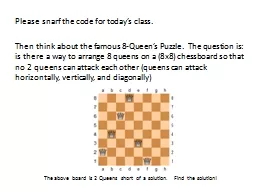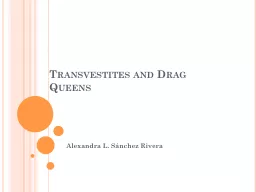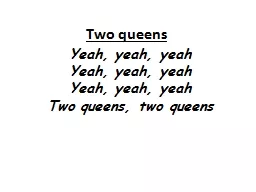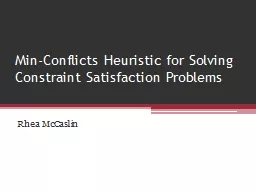PPT-The N-queens problem
Author : pamella-moone | Published Date : 2019-11-08
The Nqueens problem Team 404 brain not found Amanda Wilder Lukas Paradiso amp Evan Holmberg Abstract The project analyzes three different algorithms to find the
Presentation Embed Code
Download Presentation
Download Presentation The PPT/PDF document "The N-queens problem" is the property of its rightful owner. Permission is granted to download and print the materials on this website for personal, non-commercial use only, and to display it on your personal computer provided you do not modify the materials and that you retain all copyright notices contained in the materials. By downloading content from our website, you accept the terms of this agreement.
The N-queens problem: Transcript
Download Rules Of Document
"The N-queens problem"The content belongs to its owner. You may download and print it for personal use, without modification, and keep all copyright notices. By downloading, you agree to these terms.
Related Documents














